Subacute Necrotizing Encephalomyelopathy and MT-CO1
Introduction
Subacute Necrotizing Encephalomyelopathy (SNEM) is refferred to commonly as Leigh’s Disease. SNEM is a rare neurodegenerative disorder that affects the central nervous system [1]. It is approximated that 2.05 children in 100,000 will inherit SNEM [2]. The disease is genetically transmitted through three modes of inheritance: X-linked recessive, mitochondrial, and autosomal recessive [3].
Background
Denis Leigh reported the first case of SNEM in 1951. The male infant (7 months 3 weeks) presented with extended sleep cycles, absence of crying an poor sucking ability. The symptoms became more severe, with the addition of non-responsive pupils, and loss of motor development. Upon a necropsy, the only abnormalties were found in the central nervous system. Necrosis of brain, along with multiple lesions were found, but could not could be explained. Leigh speculated that a block of thiamine metabolism was the cause of the fatal condition [4].
SNEM along with other mitochondrial diseases, result from the failure of the mitochondria to breakdown compounds into energy. Upon an MRI or CT scan extensive necrosis of the central nervous system can be seen. However, confirmation of SNEM must be done on a biochemical level, and can only be affirmed with the mitochondrial inability of energy production [2]. The mitochondria's inability to produce energy can be caused by a break of the respiratory transport chain, as well as non-functional pyruvate dehydrogenase, mitochondrial tRNA [2]. A common form of SNEM is a result of the cytochrome c oxidase IV (Complex IV) deficiency [2].
Complex IV is the last unit in the respiratory transport chain, and is charged with taking an electron from each of 4 cytochrome c molecules, and using them converting molecular oxygen into 2 water molecules [5]. Complex IV is composed of 13 subunits, with it's first yielded from the gene COX1.
This project will depict the biochemical pathway associated with SNEM as well as the genetic implications of the non-functional COX1.
SNEM along with other mitochondrial diseases, result from the failure of the mitochondria to breakdown compounds into energy. Upon an MRI or CT scan extensive necrosis of the central nervous system can be seen. However, confirmation of SNEM must be done on a biochemical level, and can only be affirmed with the mitochondrial inability of energy production [2]. The mitochondria's inability to produce energy can be caused by a break of the respiratory transport chain, as well as non-functional pyruvate dehydrogenase, mitochondrial tRNA [2]. A common form of SNEM is a result of the cytochrome c oxidase IV (Complex IV) deficiency [2].
Complex IV is the last unit in the respiratory transport chain, and is charged with taking an electron from each of 4 cytochrome c molecules, and using them converting molecular oxygen into 2 water molecules [5]. Complex IV is composed of 13 subunits, with it's first yielded from the gene COX1.
This project will depict the biochemical pathway associated with SNEM as well as the genetic implications of the non-functional COX1.
Views of Cytochrome c Oxidase
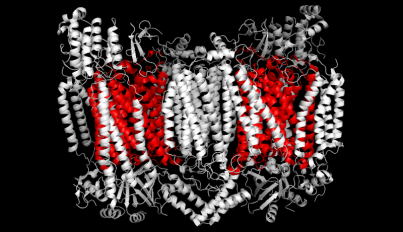
Complete cytochrome c oxidase complex. Both subunit 1 proteins used in cytochrome c oxidase are highlighted in red. Complex seen on the x axis (As it sits in the membrane). The sequence is derived form the bovine heart, and was presented at the fully oxidized state. Image generated using PyMol, 3ABL [6].
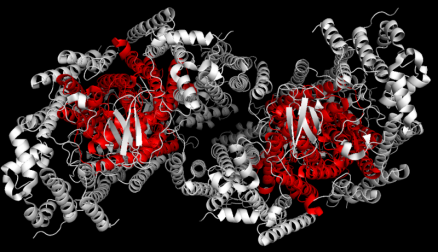
Complete cytochrome c oxidase complex. Both subunit 1 proteins used in cytochrome c oxidase are highlighted in red. Complex seen on the z axis (As seen from outside of the membrane). The sequence is derived form the bovine heart, and was presented at the fully oxidized state. Image generated using PyMol, 3ABL [6].
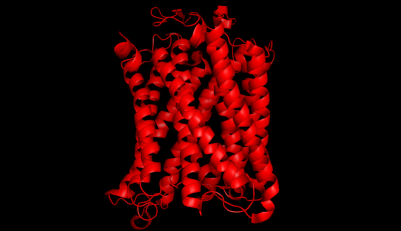
Cytochrome c oxidase subunit 1. Subunit 1seen on the z axis (As it sits in the membrane). The sequence is derived form the bovine heart, and was presented at the fully oxidized state. Image generated using PyMol, 3ABL [6].
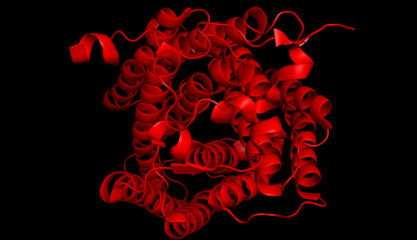
Cytochrome c oxidase subunit 1. Subunit 1seen on the y axis (As seen from outside of the membrane). The sequence is derived form the bovine heart, and was presented at the fully oxidized state. Image generated using PyMol, 3ABL [6].
Ongoing Cases and Support
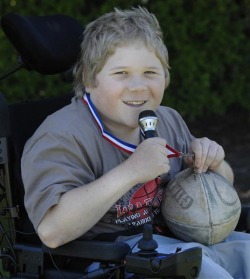
Picture obtained from Otago Daily Times
Andrew Easton (13) is described by teacher, Angela Asi, as an extremely courageous and resilient young man. Andrew was diagnosed with SNEM three years prior to this picture being taken, but has maintained his love for his favorite sport Rugby. Since his "landing" in the wheelchair, Andrew has concentrated on supporting the local teams, and kept up-to-date on the North Otago by going to the games and watching SkyTV.Full article about Andrew can be obtained through the Otage Daily Times.

Picture obtained from Evening Gazette
Adam Kinnair (22 months) is the Guest of Honor at a bike race from Whitehaven to Marske. The 95.2 mile course was undertaken by Adam's father, Micheal, and 4 friends in order to raise money to support the Cleveland Unit at James Cook University Hospital. Adam attends the clinic for treatment of SNEM, and will attend school there in the future. Full article about Adam can be found through the Evening Gazette.
Refrences
[1] National Institute of Health (2008, October 8). National Institute of Neurological Disorders and Stroke. Retrieved February 9, 2010, from NINDS Leigh's Disease Information Page: http://www.ninds.nih.gov/disorders/leighsdiesease/leighsdisease.htm
[2] Castro-Gago MD, Blanco-Barca MD, Campos-Gonzalez PhD, Arenas-Barbero PhD, Pintos-Martinez MD, Eiris-Punal MD. (2006). Epidemiology of Pediatric Mitochondrial Respiratory Chain Disorders in Northwest Spain. Pediatric Neurology, 34 (3), 204-211.
[3] National Center for Biotechnology Information. (2009, August 8). OMIM: Online Mendelian Inheritance in Man. Retrieved February 9, 2010, from Leigh Syndrome; LS: http://www.ncbi.nlm.nih.gov/entrez/dispomim.cgi?id=256000
[4] Leigh MD, Denis. (1951). Subacute Necrotizing Encephalomyelopathy in an infant. Journal of Neurology, Neurosurgery, and Psychiatry, 14, 216-221
[5] Lehninger, Nelson, Cox. (2008). Lehninger Principles of Biochemistry (5th Edition) W. H. Freeman
[6] Aoyama H, Muramoto K, Shinzawa-Itoh K, Hirata K, Yamashita E, Tsukihara T, Ogura T, Yoshikawa S. (2009). A peroxide bridge between Fe and Cu ions in the O2 reduction site of fully oxidized cytochrome c oxidase could suppress the proton pump. Proceedings of the National Academy of Sciences of the United States of America. 106 (7), 2165-2169.
[2] Castro-Gago MD, Blanco-Barca MD, Campos-Gonzalez PhD, Arenas-Barbero PhD, Pintos-Martinez MD, Eiris-Punal MD. (2006). Epidemiology of Pediatric Mitochondrial Respiratory Chain Disorders in Northwest Spain. Pediatric Neurology, 34 (3), 204-211.
[3] National Center for Biotechnology Information. (2009, August 8). OMIM: Online Mendelian Inheritance in Man. Retrieved February 9, 2010, from Leigh Syndrome; LS: http://www.ncbi.nlm.nih.gov/entrez/dispomim.cgi?id=256000
[4] Leigh MD, Denis. (1951). Subacute Necrotizing Encephalomyelopathy in an infant. Journal of Neurology, Neurosurgery, and Psychiatry, 14, 216-221
[5] Lehninger, Nelson, Cox. (2008). Lehninger Principles of Biochemistry (5th Edition) W. H. Freeman
[6] Aoyama H, Muramoto K, Shinzawa-Itoh K, Hirata K, Yamashita E, Tsukihara T, Ogura T, Yoshikawa S. (2009). A peroxide bridge between Fe and Cu ions in the O2 reduction site of fully oxidized cytochrome c oxidase could suppress the proton pump. Proceedings of the National Academy of Sciences of the United States of America. 106 (7), 2165-2169.
